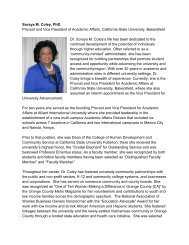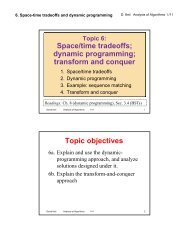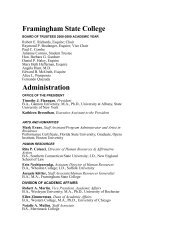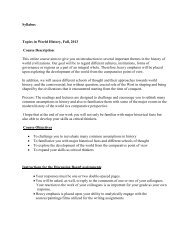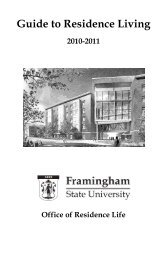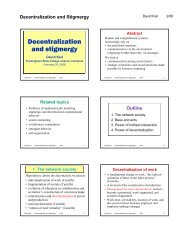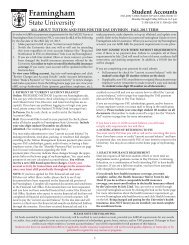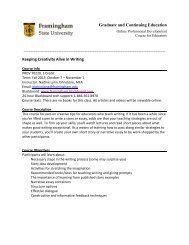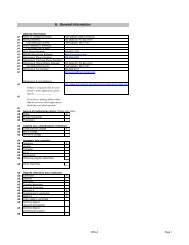Abstracts 2011 - Framingham State University
Abstracts 2011 - Framingham State University
Abstracts 2011 - Framingham State University
Create successful ePaper yourself
Turn your PDF publications into a flip-book with our unique Google optimized e-Paper software.
Jaqueline Taravella<br />
Larval Substrate Preference by the<br />
Invasive Tunicate Botrylloides<br />
violaceus.<br />
Ascidians are a group of filter feeding marine invertebrates that are successful invasive<br />
species. These invasive species have negative impacts on the fishing industry<br />
because they out compete native shellfish, such as clams and mussels, for space. In<br />
addition they increase maintenance cost for fishermen because they often grow on<br />
nets and other equipment. Botrylloides violaceus is one species, introduced from<br />
eastern Asia, which is considered invasive in the Gulf of Maine. B. violaceus<br />
reproduces June to September by brooding their larvae; larvae are released from the<br />
adult and then settle onto a substrate within a few hours. Two surveys were done<br />
before and after reproductive season at three intertidal sites in the Gulf of Maine to<br />
determine percent cover of potential substrates present and the number of B.<br />
violaceus colonies present. Choice experiments were conducted with larvae from<br />
colonies scraped off of docks. Larvae were placed in containers with choice of two<br />
substrates. A previous study showed B. violaceus most commonly on Fucus<br />
vesiculosus so larvae were given a choice of F. vesiculosus versus the other<br />
substrates identified during the intertidal survey (Ascophyllum nodosum, Chondrus<br />
crispus, and rock). The results of the substrate preference experiments showed that B.<br />
violaceus preferred rock and A. nodosum over F. vesiculosus. These results are not<br />
consistent with the previous study since B. violaceus was found more commonly on F.<br />
vesiculosus than other substrates present.<br />
Botrylloides violaceus<br />
• Irregular flat sheet,<br />
colonial tunicate<br />
• Brood larvae<br />
• Common exhalent<br />
siphon<br />
• Colors: orange to red to<br />
purple<br />
http://www.cabi.org/isc/?compid=5&dsid=107828&loadmodule=datasheet&page=481&site=144<br />
Results: Substrate Preference<br />
Substrate Pairing Chi-Squared Value<br />
Fucus vesiculosus < Ascophyllum nodosum 6.65*<br />
Fucus vesiculosus > Chondrus crispus 2.06<br />
Fucus vesiculosus < Rock 12.35*<br />
Fucus vesiculosus < Nothing 0.31<br />
Nothing > Nothing 0.54<br />
Glue > Nothing 3.59<br />
(* Indicates p-value of less than 0.05)



